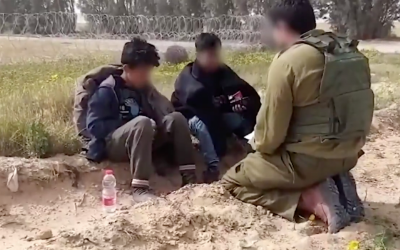"Earlier this month, Israel was added to the United Nations’ 2023 list of states that commit grave violations affecting children in situations of armed conflict. An obvious outcome is fodder to antisemitic tropes and blood libels of Jews as baby-murderers. Another problem is that this UN report is likely to be used in legal processes conducted against Israel and Israeli leaders in international courtrooms and can potentially place limitations on Israel’s ability to inflict hard power against its enemies in the battlefield.
This makes the report worthy material for in-depth reading.
The 49-page document opens with a descriptive conflict-by-conflict account followed by an annex, colloquially known as the ‘blacklist’ or ‘list of shame,’ asserting that enlisted parties commit grave violations affecting children in situations of armed conflict. Without belittling the awful and tragic loss of life and human suffering, particularly of children, that is unfortunately part and parcel of war, a closer scrutiny of the report’s assessment of Israel surfaces four interesting findings.
1. Under the category of ‘killing and maiming’ – only in the Israeli case, is the use of tear gas counted as a violation. Astonishingly, out of some 1,900 cases in which Israel is noted to kill or maim Palestinian children, around 1,100 cases denote the use of tear gas. Simply put, if Israel were judged according to the same standards as other countries in this category, the number of cases listed would decrease by almost two-thirds.
2. In looking at charges of Israel’s ‘denial of humanitarian assistance,’ as opposed to far-reaching connotations that this category may imply, 99 percent of the cases reported focus on instances in which requests to treat Palestinian children in Israeli hospitals were denied or not approved in time. There are three caveats that must accompany this charge. First, due to concerns about the misuse of procedures enabling Palestinians to enter Israel, submitting such requests involves providing documents 20 days in advance of scheduled appointments. But the report does not reveal whether access was denied or stalled owing to missing papers or late submissions, nor does it identify requests that were approved after they were resubmitted. Second, the data was not verified with the Israeli authorities. Even positing a deep mistrust by the UN when it comes to the Israeli Defense Forces, any serious investigation would include a basic cross examination of available data. Third, in contrast to the 3,000-plus requests that were not approved, 17,000 requests were approved. In short, context indicates that 85% of Palestinian children who asked to be treated in Israeli hospitals were indeed granted access to them.
3. In dealing with attacks on schools and hospitals, the assessment in this category addresses nominal cases in which fighting took place in such facilities without relating to the context, i.e., the abuse of such facilities by Hamas and Jihad terrorists. This, despite the fact that the groups’ cynical use of Palestinian civilians as human shields, along with the use of such facilities for military purposes, has been documented extensively.
4. The third problematic finding is directly linked to the fourth: the standards employed by the children and armed conflict working group to count violations are not in line with those defined in international humanitarian law. That is, although the law prohibits direct attacks on civilian objects, such as schools and medical facilities, those locations may become legitimate military targets if they contribute to military operations of the enemy and if their destruction offers a definite military advantage for the attacking side. In other words, the Children and Armed Conflict report lists Israeli actions as violations, even when they are permitted and in line with international humanitarian law.
These findings demonstrate double standards, lack of contextualization, and misleading information vis-à-vis Israel..."
June 26, 2024
Double standards on display: Israel, the U.N., children and armed conflict

Palestinian children (Screenshot)
Date
June 26, 2024
Title
Double standards on display: Israel, the U.N., children and armed conflict, The Times of Israel
Author(s)
Michal Hatuel-Radoshitzky
Original Source
